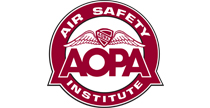Too low in the dark
(ERA10LA066)
 By David Kenny
By David Kenny
Among the most baffling aviation accidents are those in which expert pilots get caught trying to fly VFR into IMC. Of course, there are reasons why even an exceptionally well-qualified pilot might not want to make an instrument flight on a particular day: Perhaps the aircraft is not adequately equipped, or the pilot’s instrument currency has lapsed. Maybe the chance of icing argues against getting into the clouds. But thousands of hours of flight time don’t reduce the risks of trying to slip between descending ceilings and rising terrain, especially after dark—and while long experience might be expected to increase a pilot’s respect for those risks, the record suggests that this isn’t always the case.
Early in the evening of Nov. 15, 2009, a Piper Cherokee 140 flew into a mountainside in northwest New York, killing both on board. The accident took place about ten minutes after the official end of civil twilight; the sun had set about 40 minutes before the crash, and the moon an hour before that. At Saranac Lake, 19 miles from the accident site, visibility was reported as a quarter mile in fog, with the temperature one degree above the dew point. A New York State Police helicopter pilot who flew into Saranac Lake that evening described the weather as low haze with patchy low clouds with bases ranging from 800 to 4,500 feet.
The elevation of the accident site was 4,025 feet, almost 600 feet below the mountain’s peak. Radar images suggested that the airplane had been following Victor 203; the airway passes directly over the site. Data downloaded from a GPS found in the wreckage indicated that during the last 68 seconds of the flight, the airplane had descended from 4,457 feet (still below the elevation of the mountaintop). The Montreal sectional chart gives a maximum elevation figure of 5,100 feet for that area. The minimum obstruction clearance altitude for IFR traffic on that section of V203 is 6,900 feet msl.
The pilot was an ATP with airplane single- and multiengine land and single-engine sea ratings and more than 14,000 hours of reported flight experience. Not only did he hold a flight instructor’s certificate for single- and multiengine airplanes and instrument airplane, he was a designated pilot examiner. The accident took place on his flight home after administering a sport pilot checkride. The new sport pilot he’d just certified recalled that his practical test had been postponed twice that morning while they waited for the ceilings to lift.
Nothing in the official record suggests why such an experienced pilot would have been flying so far below the MEF in mountainous country after dark. Examination of the wreckage indicated that the engine was producing full power at impact, and no anomalies were found in the airframe or flight controls. The pilot was familiar with the area; in any case, he had flown over the same terrain just a few hours earlier. The NTSB report didn't describe the airplane in enough detail to make clear whether it was equipped for instrument flight; the handheld GPS found on board was an older model that did not provide terrain depiction or obstacle warnings. The temperature at Saranac Lake was 9 degrees Celsius. At the standard lapse rate, that would have put the freezing level 4,500 feet above the 1,663-foot elevation of the field, or around 6,150 msl, but the actual freezing level was not reported.
The passenger had been issued a student pilot and third-class medical certificate back in February 2005. At that time, he had reported 205 hours of flight experience. A CFI who worked with the accident pilot described the student as “building time,” but the NTSB found no evidence that any instruction was actually planned for the flight, and the same CFI described him as having been “along for the ride.”
An ATP’s instrument flying skills should keep the aircraft right-side up when there’s no longer a visible horizon, but won’t protect it from obstacles the pilot never sees. Only altitude can do that—staying safely above any object solid enough to interrupt your forward progress. Knowing the elevation of nearby terrain and giving it a healthy margin might be the most basic aspect of flight planning, and doesn’t become any less important as hours accumulate in the logbook. If conditions don’t allow that, you’re better off turning around, or just staying on the ground in the first place.
Related Links
Do the Right Thing: Decision Making for Pilots interactive course
"Going Bump in the Night" Safety Pilot
"Terrain Avoidance" Safety Brief